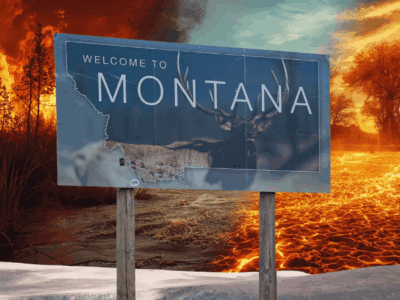The Supreme Court’s recent Superfund decision may have a significant impact on future cleanups
As Dan has noted, on Monday the U.S. Supreme Court issued an opinion in a widely-watched case interpreting CERCLA, the Superfund law. (Dan posted some brief thoughts about the opinion, BURLINGTON NORTHERN & SANTA FE RAILWAY. CO V. UNITED STATES.) Dan says that the part of the opinion dealing with apportionment of liability “does not purport to establish any new principles but does display a more favorable attitude toward apportionment than many lower courts.” This is accurate, but I think it may understate the impact of the decision. The decision has the potential to change the behavior of government and private parties in a way that will make some cleanups harder to fund, and some cases harder to resolve.
CERCLA is the primary legal tool we have to require private parties that contributed to contamination of land and groundwater to pay for the sometimes enormous costs of investigating and cleaning up that contamination. One of the hallmarks of CERCLA jurisprudence has been that courts have presumed joint and several liability among defendants (meaning that even a defendant that contributed in a comparatively minor way to contamination – or its insurer – might be held responsible for all the cleanup costs. Courts have widely refused to apportion liability among potentially responsible parties who contributed to a single harm, except in narrow circumstances in which there is a very sound, clear evidentiary basis for dividing responsibility. Most courts have taken that position since the early days of CERCLA (following United States v. Chem-Dyne Corp., 572 F. Supp. 802 (S.D. Ohio 1983). In those early days, joint and several liability seemed particularly onerous since defendants did not have a clear statutory means to pull other responsible parties into the litigation to spread the burden, though many courts allowed defendants to do that and to try to prove others’ responsibility for their share of the contamination.
When Congress amended CERCLA in 1986 with the Superfund Amendments and Reauthorization Act (SARA), it added a section to CERCLA that explicitly allowed “contribution” actions, in which defendants could sue other potentially responsible parties to recoup the pro rata share of remediation costs for which those parties might be responsible. This feature of the law enabled the EPA, state governments, and others not responsible for contamination to sue only a few key defendants in order to trigger litigation that would resolve multiple parties’ liability, as the defendants brought other parties into the litigation (and generally, to the negotiating table).
Because it was clear in most cases that the original defendants were likely to be on the hook for all the costs, there was ample motivation on their part to research who else might be responsible, assemble them, and motivate them to contribute to the costs of response to the contamination. In practical terms, the background of joint and several liability has often been an important factor in bringing everyone to the table.
Congress could have decided, when it enacted SARA, to disapprove of courts’ general presumption of joint and several liability or of the trend towards finding only narrow, rare exceptions to joint and several liability. Instead, Congress kept the structure that had led courts to that presumption, and added the contribution claim to provide a clear mechanism to allow defendants held jointly and severally liable to obtain partial compensation from other parties for their pro rata share of cleanup costs. And courts continued to presume joint and several liability in cases of indivisible harm.Here, the Court found that the District Court was correct to apportion liability in a case with a single, indivisible contamination harm. The Court approved of the District Court’s reliance on some very imprecise information to estimate the relative proportion of harm that each party was responsible for. Among the factors the court used were the percentage footprint of surface area of the property occupied by various parties, the time over which they operated, and rough estimates of “the volume of hazardous-substance-releasing activities” by the parties.
Although this opinion could be read narrowly to apply to its facts, I believe it is inconsistent with what most courts have done in the past, and with the past expectations of plaintiffs and defendants in cleanup disputes. At least some lower courts will read this opinion as instructing them that there is a significantly lower burden to show divisibility. Defendants may argue for apportionment more often rather than settle early, and governments and other innocent plaintiffs may be motivated to do more investigation of potentially responsible parties and to sue more of them from the outset, in order to ensure there will be enough money at stake to fund cleanup costs.
While CERCLA is famously inefficient and expensive, I don’t think the combination of presumptive joint and several liability with the right of contribution has been the main source of that problem; if anything, I suspect those features have made more cases settle earlier, with involvement of more responsible parties. And the law has resulted in some real cleanup successes. in any event, it will be interesting to see what impact this case will have on future cleanup cases.







Reader Comments